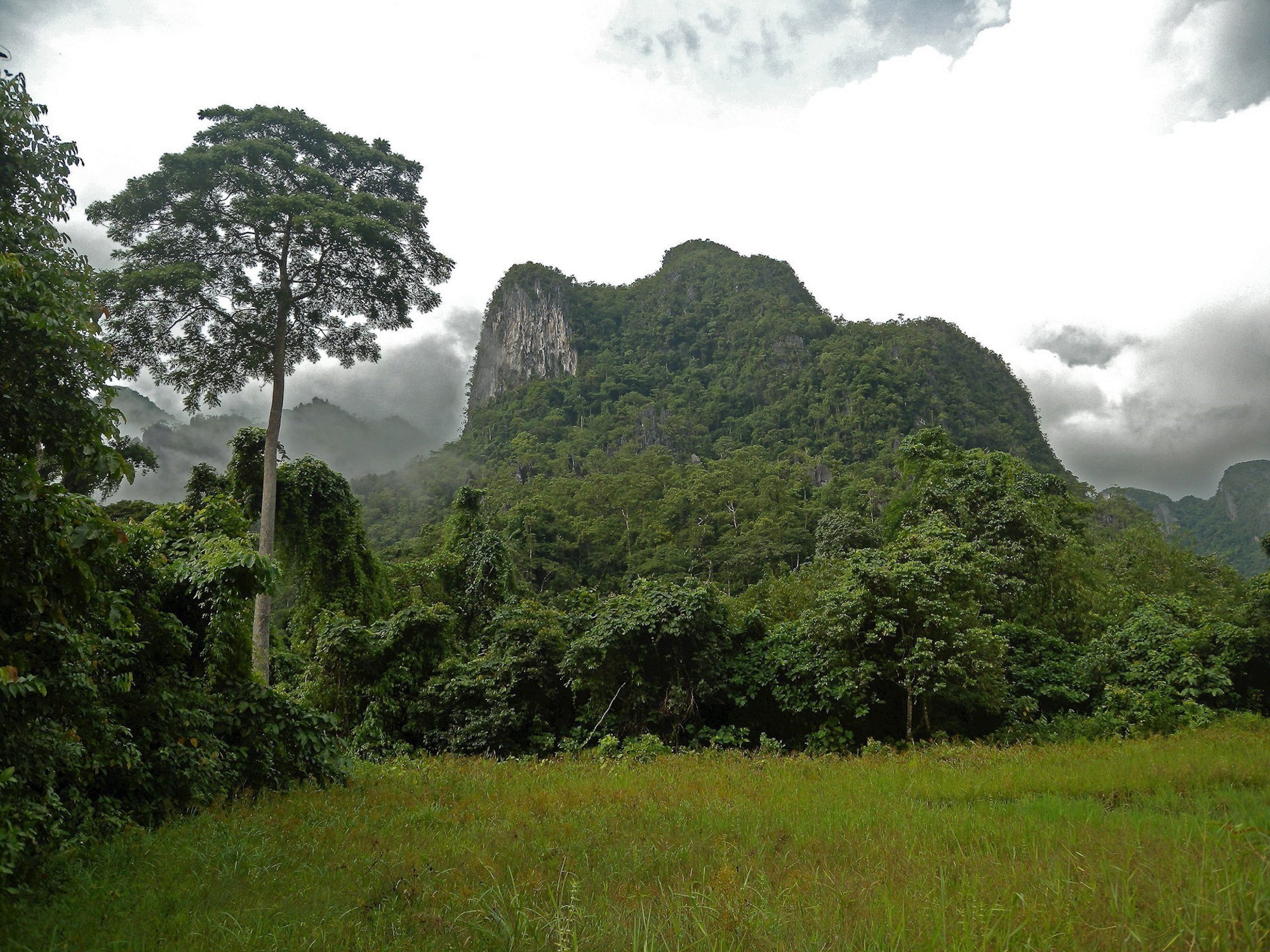Documenting the plants of poorly known areas
Many parts of the tropics are poorly known botanically. A major aspect of the Tropical Section's efforts are to explore these poorly known regions and to compile data on the plants found there. This data is then published as checklists or inventories so that this knowledge is more widely available and can be used to manage the important plant diversity accordingly.
1. The Flora of Cambodia, Laos and Vietnam
RBGE is one of the two editorial centres of this flora, the other being the Muséum national d’histoire naturelle in Paris. Taxonomic revisions are submitted to the editors who verify the scientific accuracy of the text before sending it for publication. Revisions of three families were published in 2014 and another is in preparation for early 2018. Revisions of the Myrtaceae, Cannabaceae and several other families have been promised in the coming few years.
2. Flora Malesiana
Flora Malesiana is an international flora project aiming to name, describe and inventory the complete vascular plant flora of Malesia, the region including Malaysia, Singapore, Indonesia, Brunei Darussalam, the Philippines, Timor-Leste and Papua New Guinea. The Malesian biodiversity hotspot harbours a staggering vascular plant diversity estimated at more than 45,000 species. RBGE is a member of the board of the Flora Malesiana Foundation and several RBGE staff are coordinating taxonomic treatments for the Flora: Peter Wilkie for Sapotaceae, Mark Hughes for Begoniaceae and Mark Newman for Zingiberaceae. In 2016 it hosted the 10th Flora Malesiana Symposium and the proceedings are due to be published in June 2018.
3. The Flora of Peninsular Malaysia
The Flora of Peninsular Malaysia is an initiative of the Forestry Research Institute Malaysia (FRIM). The project started in 2005 and will cover more than the 8000 species of vascular plants from theis mega diverse area. To date eight volumes have been published. RBGE researchers are actively collaborating with this project. Mark Hughes has produced an account ofthe Memecylonaceae and Peter Wilkie is currently producing the account for Sapotaceae.
4. The Flora of Singapore
The Flora of Singapore is a new initiative by Singapore Botanic Gardens to documentthe flora of the Island. Peter Wilkie will be producing the account of Sapotaceae and Mark Hughes the account of Memecylonaceae.
5. Checklist of vascular plants of Lao PDR
Lao PDR is in the Indo-Burma Biodiversity Hotspot. As a relatively sparsely populated country, it still has a lot of natural forest. Although the flora has been catalogued (Flore générale de l’Indo-Chine, 1907–1950), this was based on a very superficial survey. We don’t know the true number of vascular plant species in the country, even to and accuracy of a few hundred!
Lao PDR:
236,800 sq km & 6.4 million people
About 40% forest cover, higher than its neighbours
Only a handful of qualified botanists
3 herbarium specimens per 100 sq km, compared to 1700 in the UK
A checklist written at RBGE from 2004–2007 increased the number of species known from a little over 2,000 to 4,850. Since then, hundreds more species have been found, some new to science but most simply not known to grow in Lao. The total number of species will be considerably higher, perhaps 9-10,000.
An on-line searchable data base for taxonomists has been produced which includes nearly 11,000 scientific names, and over 10,200 herbarium collections. It is intended to support scientists carrying out taxonomic and conservation work on Lao plants.
Several Lao botanists have been trained at RBGE, learning to revise groups of plants such as Eriocaulaceae and Zingiberaceae.
6. Amazon Checklist
The first ever verified checklist of plant diversity in the Amazon has revealed unexpected data providing an exciting and solid new foundation for future research and exploration into the ecology and evolution of one of Earth’s most species-rich regions. Published today (Tuesday, September 19) in the Proceedings of the National Academy of Sciences (http://m.pnas.org/content/early/2017/09/12/1706756114 ), the research paper "Challenging checklists: counting plant species in the Amazon" sets out a clearer picture ofexactly what does grow in this biodiversity hot spot.
In cataloguing 14,003 species of seed plants - flowering plants and cycads - from the Amazon basin, the team of taxonomists from 32 research institutes in Amazonian countries, Europe, and USA, discovered fewer than half of the plant species - just 6,797 - to be trees, a number lower than expected against suggestions in previously published work. At the same time, herbs, shrubs and epiphytes - plants that grow on other plants - were more diverse than anticipated: symptomatic of having often been overlooked in studies of tropical diversity.
7. RIMBA Sarawak
RBGE is a founding signatory of the RIMBA (Research for Intensified Management of Bio-Rich Areas of Sarawak) Sarawak Initiative. The main objective is to promote international and regional collaborations to:
- Study and document the plethora of biodiversity components of the wildlife sanctuaries, national parks and nature reserves of Sarawak;
- Formulate management plans for the wildlife sanctuaries, national parks and nature reserve for their sustainability;
- Build and enhance the capabilities and skills in research and conservation management; and
- Disseminate through publications, conferences, seminars, workshops, colloquia and other fora on information and conservation efforts for biodiversity of Sarawak.
To date RBGE scientist, Peter Wilkie, together with researchers from the Sarawak Forestry Corporation and Singapore Botanic Gardens have undertaken fieldwork in Nanga Bloh, Lanjak-Entimau Wildlife Sanctuary. Further research visits to other protected sites in Sarawak are currently in the planning stage.

